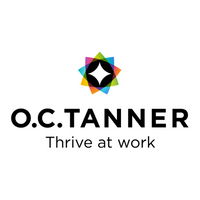How a sense of belonging can help drive engagement with employee benefits and company culture
Companies with healthy, thriving cultures are more likely to have engaged employees. And so, by nurturing a positive workplace culture, engagement will follow. Leaders simply can’t ‘drive engagement’ through one-off actions and ad hoc incentives, but must create an environment in which employees choose to be involved, acting in an engaged way that leads to great work and business success.
So how can benefits be used to improve engagement with workplace culture? The good news is that benefits professionals increasingly understand the key is to look at the bigger picture first, seeing what needs to be done to improve company culture and then determining how benefits can support this transformation.
Don’t force engagement
In isolation, employee engagement strategies do little to develop engaged workforces. The entire corporate culture influences engagement and so all aspects of culture must be considered in order to nurture motivated employees, from organisational purpose and development opportunities through to leadership and wellbeing.
After all, an employee’s sense of belonging and how engaged they are with their work is influenced by a multitude of daily micro-experiences from how comfortable their desk chair is through to the support they receive from their team and manager. No initiative to ‘engage’ an employee is going to work within a toxic culture in which leaders micromanage, teams work in disconnected silos, little care is given to employee wellbeing and recognition is infrequent.
Therefore, for an employee to engage with an organisation, it must be their choice. They need to feel that the organisation warrants their engagement and that they will benefit from investing their time, effort and emotions into the organisation and its people.
Culture comes first
Achieving an engaged and motivated workforce must begin with looking at the corporate culture. Is the culture positive and thriving or negative and draining? Even the most appealing employee benefits package will struggle to engage workers within a damaged culture.
To better understand company culture, it’s important to analyse its six key aspects – organisational purpose, company success, employee opportunities, leadership quality, staff appreciation and wellbeing – and in partnership with the leadership team, determine how each element will be addressed.
• Is the organisational purpose inspiring?
• Do people feel as though they’re part of a winning team?
• Do employees have plenty of opportunities to grow and develop?
• Do leaders practice modern leadership in which mentorship and compassion come first?
• How appreciated do staff feel and is their wellbeing a priority?
The employee benefits strategy should then be designed with the bigger picture in mind, thereby helping the leadership team shape workplace culture across all aspects of the company.
Prioritise recognition
Every employee benefits package must include a recognition programme, as recognition has been proven to improve all aspects of company culture, from how connected employees feel to organisational purpose through to how likely they are to do great work. This then automatically creates a more engaged workforce. In fact, O.C. Tanner’s 2022 Global Culture Report highlights that employees are 18 times’ more likely to do great work when recognised. Recognition also builds trust, camaraderie and the perception that individual contributions count, with almost 90% of employees having high trust in a leader who recognises their accomplishments, compared with 48% who feel the same without.
Worryingly, in the absence of recognition, connections between employees and their leaders and employees and their colleagues are damaged, creating a fragmented culture.
And so recognition goes a long way towards creating a thriving culture, however at a minimum, it must be encouraged and supported as an everyday part of the culture. This means:
• Both small and big efforts (and accomplishments) are recognised frequently
• Recognition is personalised and crafted around the individual
• Leaders regularly recognise their teams and encourage team members to appreciate each other
In hybrid/remote work, recognition technology should also be used to streamline the process, enabling people to give and receive recognition as part of their daily flow of work. The easier it is to appreciate, the higher the likelihood of recognition becoming embedded into daily culture. In fact, companies where it is embedded are four times’ more likely to have engaged employees.
Connect benefits to culture strategy
Employee benefits - including a robust recognition programme - have an important role to play in helping employees feel part of a flourishing workplace culture. However, no benefits strategy can operate in isolation. It must form part of the big picture, helping to shape the culture of tomorrow in which everyone feels engaged with the company and invested in its future.
Supplied by REBA Associate Member, O. C. Tanner
Giving teams the integrated tools they need when, where and how they need them.








